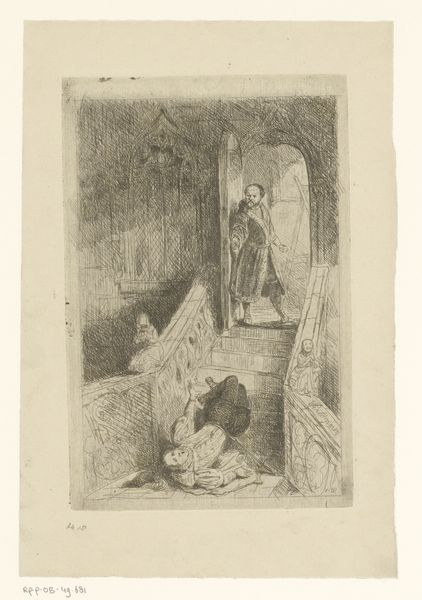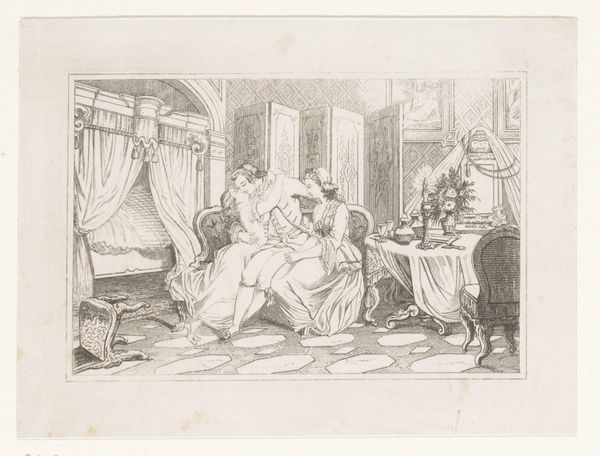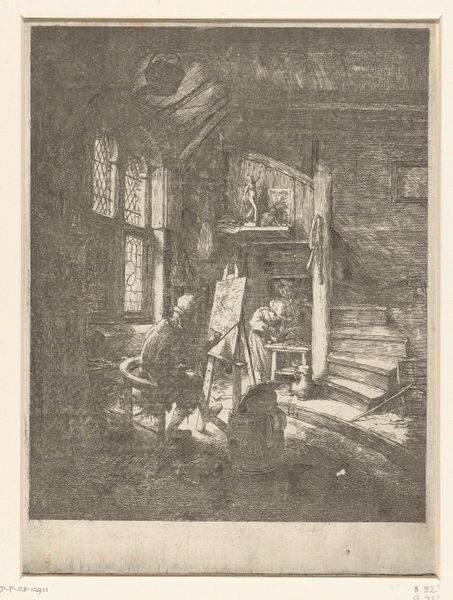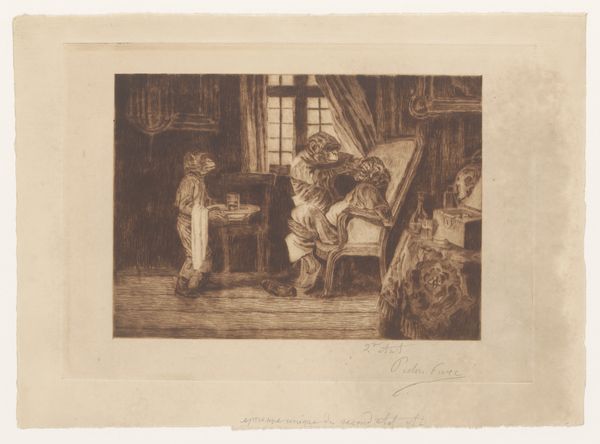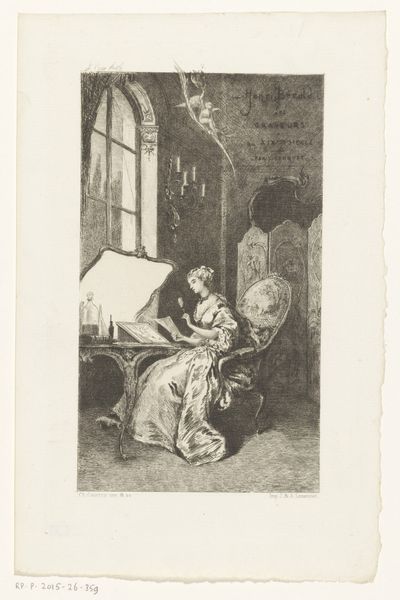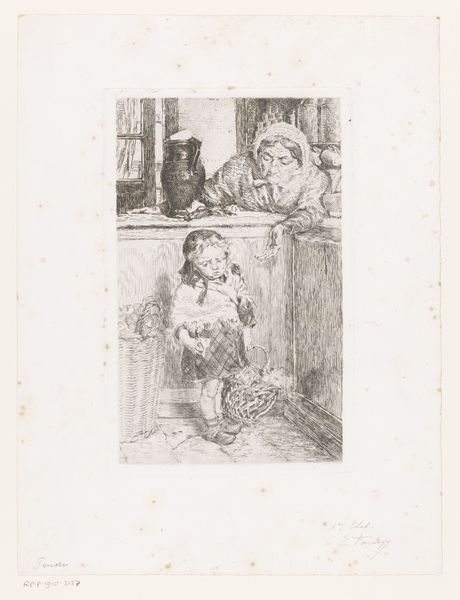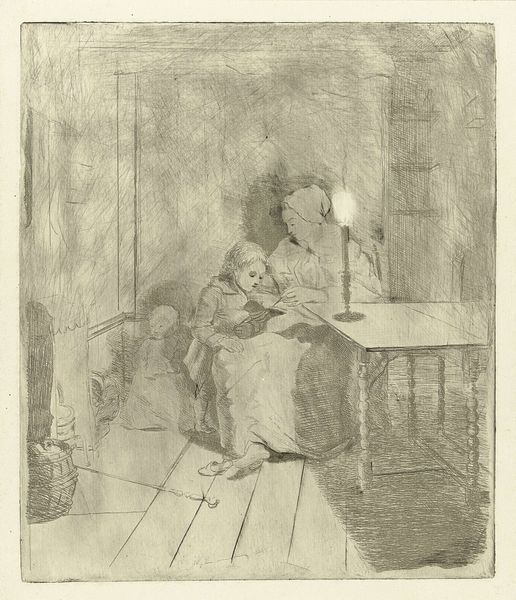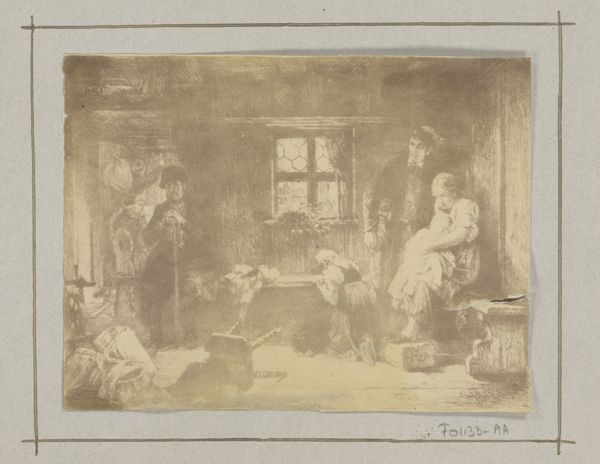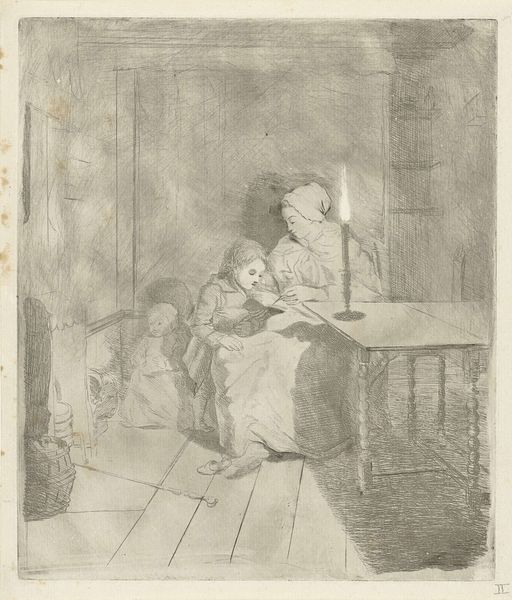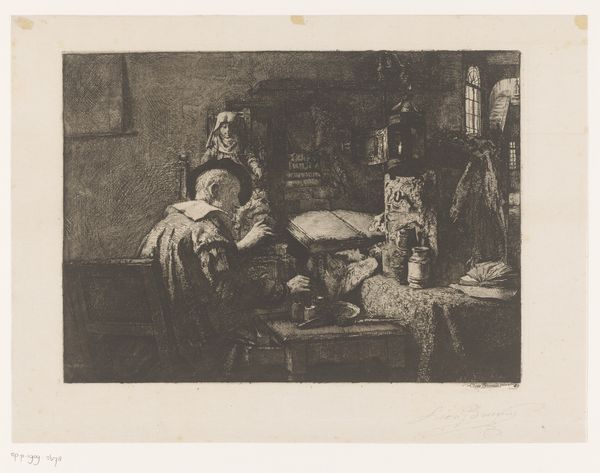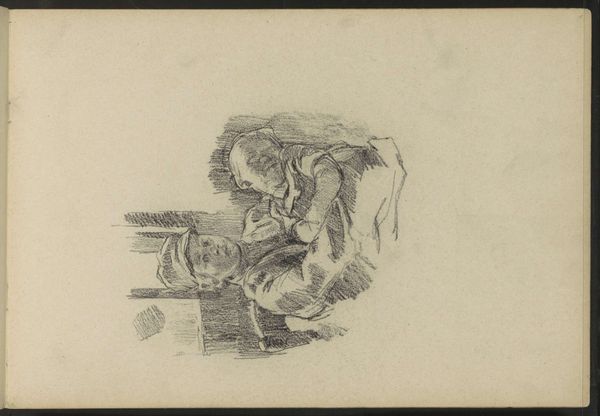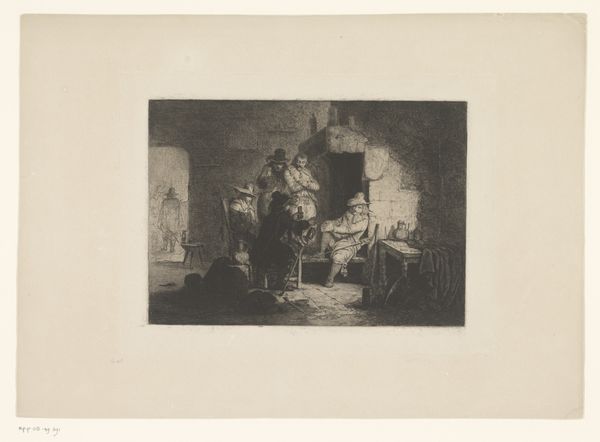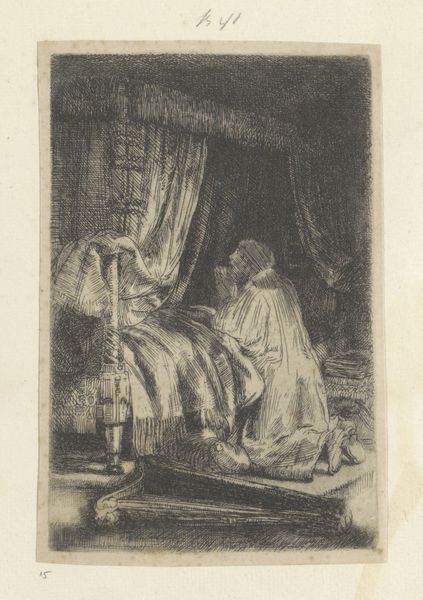
drawing, paper, ink
#
drawing
#
baroque
#
paper
#
ink
#
genre-painting
Dimensions: height 95 mm, width 145 mm
Copyright: Rijks Museum: Open Domain
Editor: This is Rembrandt van Rijn's "The Holy Family with the Cat and Snake," likely created between 1654 and 1648, rendered in ink on paper. It has a sense of intimacy and quiet domesticity. What are your thoughts on it? Curator: What I immediately notice is the materiality – ink on paper. This wasn’t simply about representation, it was about process. Etching, specifically, a labor-intensive method demanding skilled artisans, often working collaboratively in workshops. It begs the question: how does this process impact the reading of a traditionally “high art” subject matter, like the Holy Family? Editor: So, the medium influences how we perceive the subject? Curator: Absolutely. Rembrandt chose etching, a medium allowing for mass production, unlike one-off paintings commissioned by the elite. What does it signify that the Holy Family is now potentially accessible to a broader audience, through these readily produced paper impressions? Are we democratizing the sacred through materials and modes of reproduction? Editor: That's fascinating! It shifts the focus from divine uniqueness to perhaps, accessible piety. What about the “genre-painting” tag? Does the everyday nature of the scene play into this shift you’re describing? Curator: Precisely. Observe the snake. Its inclusion reframes the theological narrative as situated within a common household. The emphasis shifts to labor too – notice the textiles in the piece; drapery, the cradle, alluding to the labour-intensive production processes involved in even basic domestic life. Think of the cottage industries, the societal reliance on this labor. Editor: I never considered the societal impact of material representation, its accessibility, and its implied commentary. Curator: That's the beauty of examining art through the lens of materials and production; it unveils the intricate connections between art, labour, and society. It compels us to re-evaluate what constitutes art and whom it serves.
Comments
No comments
Be the first to comment and join the conversation on the ultimate creative platform.

